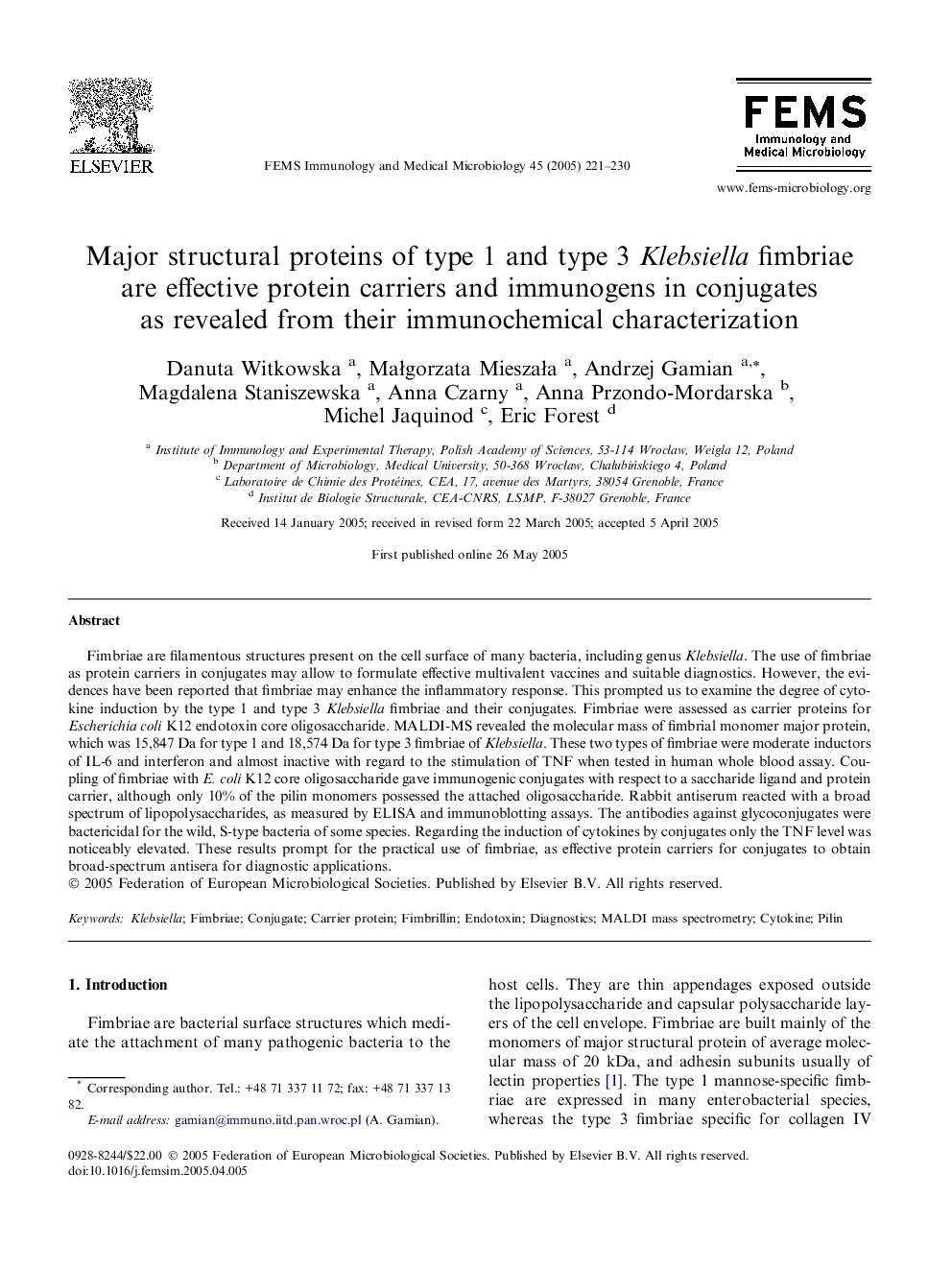| Article ID | Journal | Published Year | Pages | File Type |
|---|---|---|---|---|
| 9277982 | FEMS Immunology and Medical Microbiology | 2005 | 10 Pages |
Abstract
Fimbriae are filamentous structures present on the cell surface of many bacteria, including genus Klebsiella. The use of fimbriae as protein carriers in conjugates may allow to formulate effective multivalent vaccines and suitable diagnostics. However, the evidences have been reported that fimbriae may enhance the inflammatory response. This prompted us to examine the degree of cytokine induction by the type 1 and type 3 Klebsiella fimbriae and their conjugates. Fimbriae were assessed as carrier proteins for Escherichia coli K12 endotoxin core oligosaccharide. MALDI-MS revealed the molecular mass of fimbrial monomer major protein, which was 15,847 Da for type 1 and 18,574 Da for type 3 fimbriae of Klebsiella. These two types of fimbriae were moderate inductors of IL-6 and interferon and almost inactive with regard to the stimulation of TNF when tested in human whole blood assay. Coupling of fimbriae with E. coli K12 core oligosaccharide gave immunogenic conjugates with respect to a saccharide ligand and protein carrier, although only 10% of the pilin monomers possessed the attached oligosaccharide. Rabbit antiserum reacted with a broad spectrum of lipopolysaccharides, as measured by ELISA and immunoblotting assays. The antibodies against glycoconjugates were bactericidal for the wild, S-type bacteria of some species. Regarding the induction of cytokines by conjugates only the TNF level was noticeably elevated. These results prompt for the practical use of fimbriae, as effective protein carriers for conjugates to obtain broad-spectrum antisera for diagnostic applications.
Keywords
Related Topics
Life Sciences
Immunology and Microbiology
Immunology
Authors
Danuta Witkowska, MaÅgorzata MieszaÅa, Andrzej Gamian, Magdalena Staniszewska, Anna Czarny, Anna Przondo-Mordarska, Michel Jaquinod, Eric Forest,
